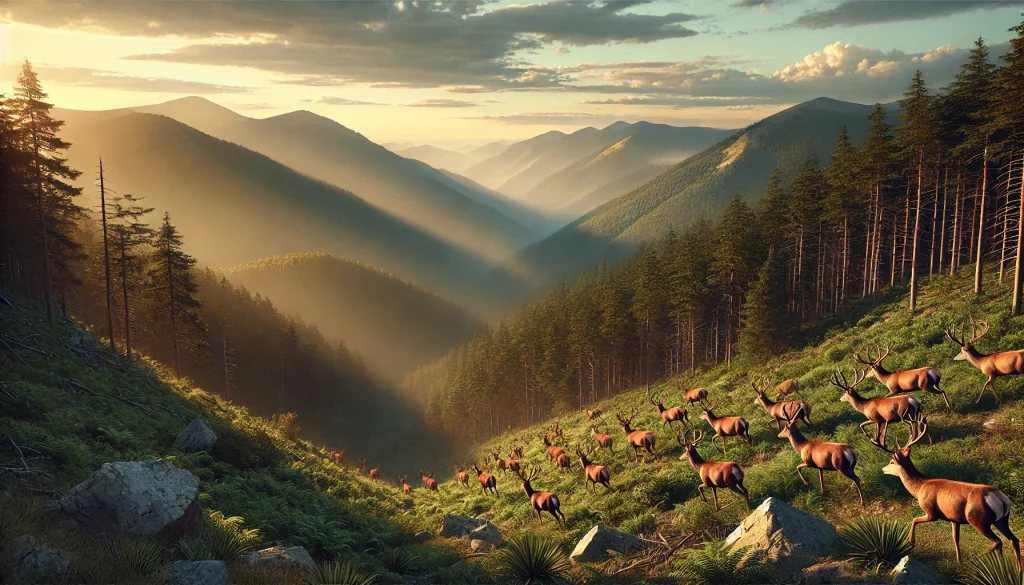Artificial intelligence (AI) is rapidly transforming the field of environmental conservation, offering powerful tools for protecting wildlife and preserving ecosystems. From predicting animal migrations to combating poaching and monitoring biodiversity, AI-driven predictive modeling is enabling conservationists to make data-driven decisions that enhance wildlife protection. This article explores how AI is revolutionizing environmental conservation, the technologies behind predictive modeling, and the challenges and future prospects of using AI for wildlife protection.
The Need for Advanced Conservation Tools
The global biodiversity crisis is accelerating at an unprecedented rate, with habitat destruction, climate change, and illegal poaching pushing countless species toward extinction. Traditional conservation methods, such as manual tracking and field observations, are time-consuming and often inefficient. Conservationists are increasingly turning to AI technologies to enhance their efforts in monitoring wildlife, predicting threats, and implementing proactive conservation strategies.
AI-driven predictive modeling allows conservationists to analyze vast amounts of environmental data, identify patterns, and make accurate forecasts about animal behavior and ecosystem changes. By leveraging AI, wildlife protection agencies can develop more effective strategies for preserving endangered species and maintaining ecological balance.
Predictive Modeling in Wildlife Migration
One of the most significant applications of AI in wildlife conservation is predictive modeling for animal migrations. Many species rely on seasonal migrations for survival, moving across vast landscapes in search of food, breeding grounds, and suitable climates. However, climate change and human activities, such as urbanization and deforestation, are disrupting these migration patterns, leading to population declines and habitat fragmentation.
AI algorithms can analyze historical migration data, satellite imagery, weather patterns, and environmental variables to predict migration routes and timings. Machine learning models, particularly recurrent neural networks (RNNs) and convolutional neural networks (CNNs), are used to process spatiotemporal data and forecast animal movements with high accuracy.
For example, the AI system “Movebank” uses GPS tracking data to monitor migratory birds’ movements, predicting their routes based on weather conditions and habitat availability. This helps conservationists implement protective measures, such as creating wildlife corridors and minimizing human-wildlife conflicts along migration paths.
Combating Poaching with AI-Powered Surveillance
Illegal poaching is one of the most pressing threats to wildlife conservation, driving iconic species like elephants, rhinos, and tigers to the brink of extinction. AI-powered surveillance systems are playing a pivotal role in combating poaching by enhancing real-time monitoring and threat detection in protected areas.
AI-driven camera traps equipped with image recognition technology can automatically identify animals and human intruders, sending instant alerts to park rangers. These systems use deep learning algorithms to differentiate between wildlife and potential poachers, reducing false alarms and increasing response efficiency.
For instance, the “Wildlife Intelligence” platform utilizes AI to analyze thousands of images captured by camera traps in remote forests. The system accurately detects poaching activities and provides actionable intelligence to anti-poaching units, enabling rapid intervention and enhancing law enforcement efforts.
Additionally, AI-powered drones are used for aerial surveillance, patrolling vast conservation areas that are challenging to monitor on foot. These drones are equipped with thermal imaging cameras and AI algorithms that detect heat signatures of animals and humans, even at night. By identifying suspicious activities, drones help rangers track poachers and safeguard wildlife habitats.
Monitoring Biodiversity and Ecosystem Health
AI is also transforming biodiversity monitoring by automating species identification and ecosystem health assessments. Traditional biodiversity surveys are labor-intensive and often rely on human expertise for species identification. AI-powered image and sound recognition tools are streamlining this process, enabling rapid and accurate identification of species in complex ecosystems.
For example, the “Ecoacoustics” approach uses AI to analyze soundscapes recorded in natural habitats. Machine learning models are trained to recognize animal vocalizations, such as bird songs, frog calls, and insect sounds, providing valuable insights into species diversity and population dynamics.
AI-powered image recognition platforms, like “iNaturalist,” allow citizen scientists and researchers to upload photos of plants and animals. The AI model automatically identifies the species, contributing to global biodiversity databases and enabling large-scale ecological studies.
Predictive Modeling for Habitat Conservation
Habitat loss is one of the leading drivers of species extinction, making habitat conservation a critical aspect of wildlife protection. AI predictive modeling is being used to identify suitable habitats for endangered species, forecast habitat changes due to climate change, and optimize land-use planning.
Machine learning models analyze satellite imagery, environmental variables, and species distribution data to create habitat suitability maps. These maps help conservationists identify priority areas for habitat restoration and protection. For example, the “Habitat Suitability Index” (HSI) uses AI algorithms to predict suitable nesting sites for endangered sea turtles, guiding conservation efforts along coastal areas.
Challenges and Ethical Considerations
While AI is revolutionizing environmental conservation, several challenges and ethical considerations need to be addressed:
1. Data Privacy and Security: AI systems rely on vast amounts of data, including geolocation and wildlife tracking information. Ensuring data privacy and preventing misuse is crucial for protecting endangered species from poachers who might exploit this information.
2. Bias in AI Models: AI models can inherit biases from training data, leading to inaccurate predictions or underrepresentation of certain species. Efforts to diversify data sources and ensure model fairness are essential for reliable conservation outcomes.
3. Dependency on Technology: Overreliance on AI technologies may reduce on-the-ground conservation efforts and human expertise. A balanced approach, integrating AI with traditional conservation practices, is necessary for sustainable wildlife protection.
Conclusion
AI is emerging as a powerful ally in the fight against biodiversity loss and environmental degradation. By harnessing predictive modeling, image recognition, and real-time surveillance, AI is empowering conservationists to make data-driven decisions that enhance wildlife protection. From predicting animal migrations to combating poaching and monitoring biodiversity, AI technologies are transforming how we understand and protect the natural world.
However, the successful integration of AI in environmental conservation requires ethical considerations, transparent data usage, and collaboration among governments, researchers, and conservation organizations. As AI continues to evolve, its potential to safeguard wildlife and preserve ecosystems will play a vital role in shaping a sustainable future.



Even the AI is already on the lookout for wild beasts! I hope that the number of poachers will decrease…
for real, that’s awesome, if this really work❤️
Yeah I love animals!1!🥰
AI + nature = fighting chance. Who’s in?
Ai helps the planet 🌎! planet in future is green (maybe)
I hope ai can make a difference for our planet. 👍👍
camera traps catchin baddies?? love that huhuh like in a moovie 👍👍👍
Yeah, the main thing is just no false alarms😅
aifor wildlife? sounds epic 👍
ai lit! saving animals, fight poachers🔥🔥